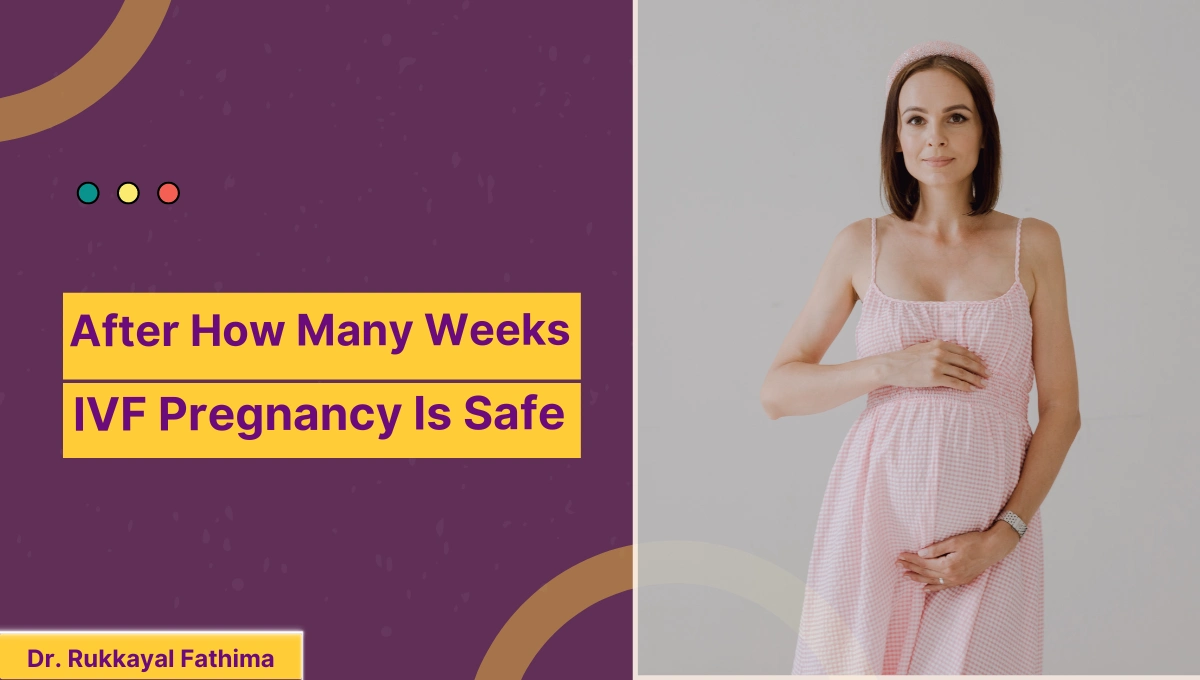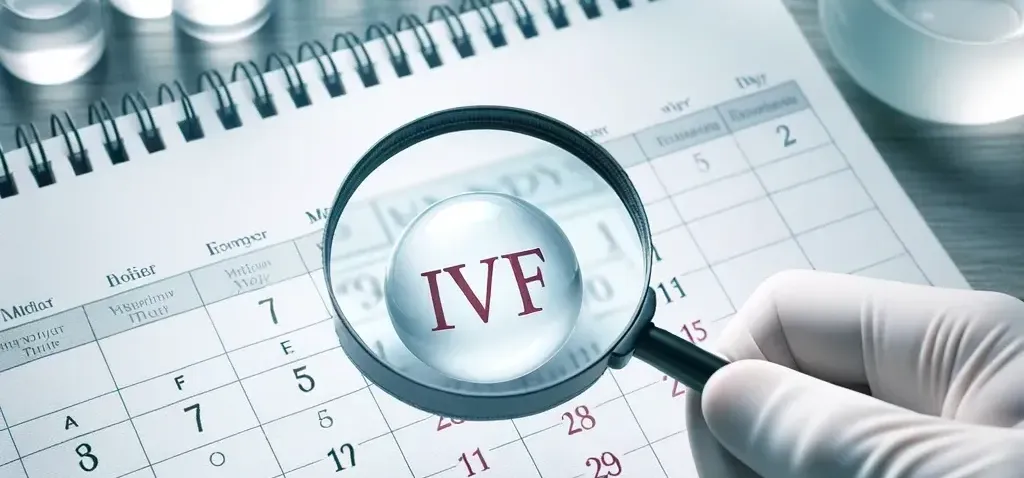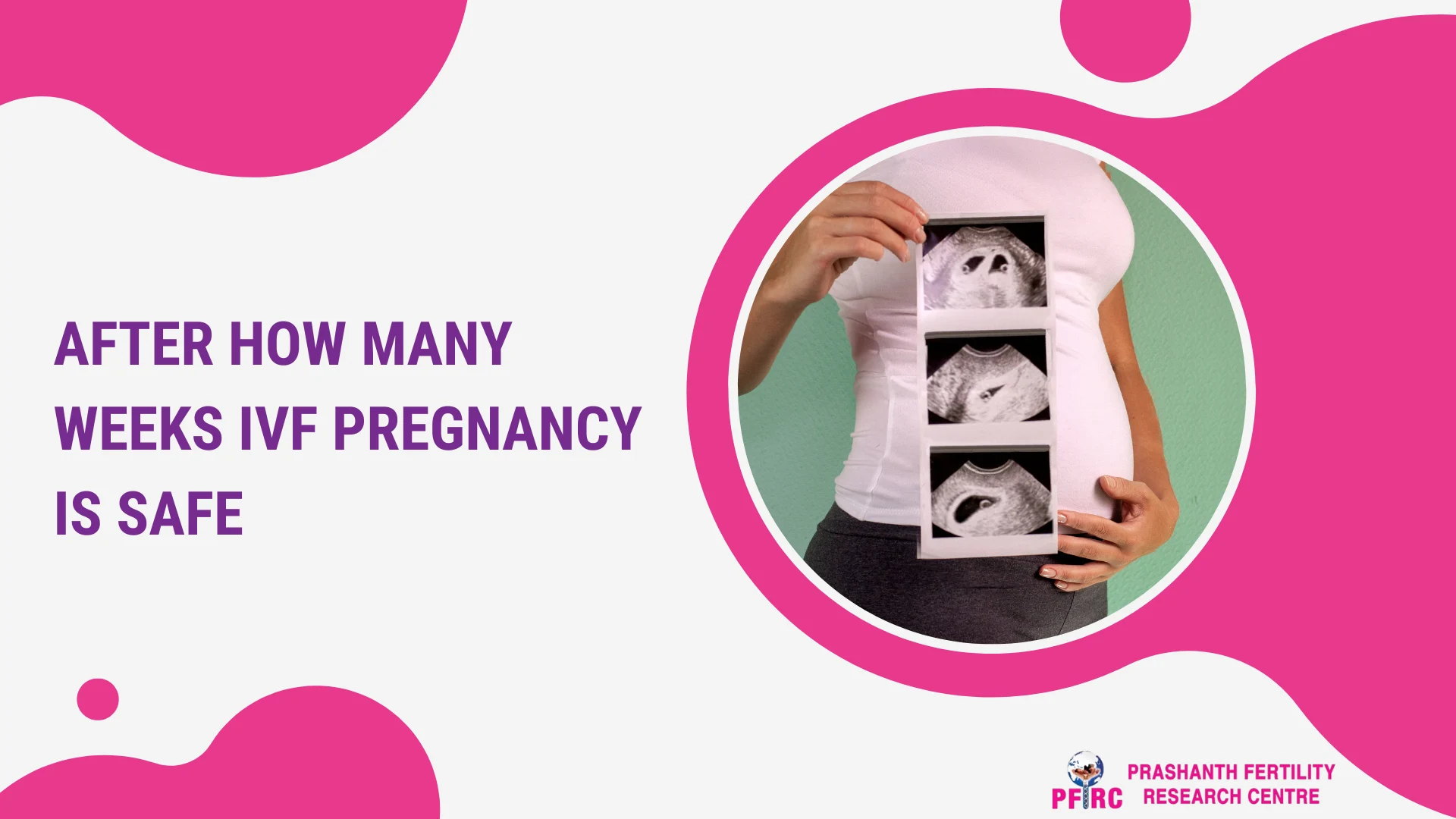How Many Weeks Pregnant Am I with IVF?
If you’re going through in vitro fertilization (IVF), figuring out how far along you are in your pregnancy can feel like solving a puzzle. Unlike natural conception, where you might count from your last period, IVF flips the script. It’s exciting, a little confusing, and totally unique to this journey. Whether you’re fresh off an embryo transfer or anxiously awaiting your first ultrasound, this guide is here to break it all down for you—step by step, with real talk and practical tips.
Pregnancy is a wild ride, and IVF adds its own twists. So, grab a cozy drink, settle in, and let’s dive into everything you need to know about calculating your pregnancy weeks with IVF, plus some extras you won’t find anywhere else.
Why IVF Pregnancy Dating Is Different
With a natural pregnancy, doctors usually start counting from the first day of your last menstrual period (LMP)—about 40 weeks total until your due date. Easy, right? But IVF isn’t quite that straightforward. Your eggs are retrieved, fertilized in a lab, and transferred to your uterus on a specific schedule. There’s no “last period” to lean on because your cycle is carefully controlled with meds. So, how do we figure this out?
In IVF, your pregnancy timeline hinges on two big moments: the egg retrieval and the embryo transfer. These dates, plus the age of your embryo (think Day 3 or Day 5), are the keys to unlocking your pregnancy weeks. It’s like your baby’s story starts in a petri dish, and that’s pretty cool when you think about it.
The Basics: How Doctors Calculate IVF Pregnancy Weeks
Doctors have a neat trick for dating IVF pregnancies. They don’t just wing it—they use a system that ties everything back to when your eggs were retrieved or your embryo was transferred. Here’s the rundown:
Step 1: Egg Retrieval Day
This is when your eggs are collected from your ovaries. Think of it as Day 0 of the whole process. Doctors often set a “theoretical LMP” about 14 days before this date. Why 14 days? That’s roughly how long it takes in a natural cycle from your period starting to ovulation. So, if your egg retrieval was on March 1st, your theoretical LMP would be February 15th. From there, you’re already “2 weeks pregnant” on retrieval day—before fertilization even happens!
Step 2: Embryo Age at Transfer
Next, consider how old your embryo was when it was transferred. Most transfers happen on:
- Day 3: The embryo’s been growing for three days since fertilization.
- Day 5: It’s a blastocyst, five days post-fertilization.
If you had a Day 5 transfer five days after retrieval (say, March 6th), you’re technically 2 weeks (from the theoretical LMP) plus 5 days—about 2 weeks and 5 days pregnant on transfer day.
Step 3: Counting Forward
After the transfer, you count weeks like any other pregnancy, but starting from that adjusted timeline. So, two weeks after a Day 5 transfer (March 20th), you’d be around 4 weeks and 5 days pregnant. Simple math, big milestone!
Quick Example
- Egg retrieval: March 1st (theoretical LMP: February 15th)
- Day 5 transfer: March 6th
- Two weeks later (March 20th): 4 weeks and 5 days pregnant
Doctors tweak this based on your clinic’s protocol, but this is the gist of it.

Fresh vs. Frozen Embryo Transfers: Does It Change Things?
Here’s where it gets interesting. Not all IVF cycles are the same. Did you do a fresh transfer right after retrieval, or a frozen embryo transfer (FET) later on? This affects how you calculate your weeks.
Fresh Embryo Transfer
With a fresh transfer, the timeline flows straight from retrieval to transfer. If your Day 5 embryo is transferred on March 6th, you’re 2 weeks and 5 days pregnant that day (using the 14-day-before-retrieval rule). Easy peasy.
Frozen Embryo Transfer (FET)
FETs shake things up. Your embryo might have been frozen for weeks, months, or even years before transfer. Here, doctors focus on the transfer date and the embryo’s age at freezing. For example:
- A Day 5 embryo frozen after retrieval, then transferred on April 1st, means you’re 2 weeks and 5 days pregnant on transfer day.
- Add two weeks (April 15th), and you’re 4 weeks and 5 days along.
The freeze doesn’t “pause” the pregnancy clock—it’s all about when that embryo lands in your uterus.
Pro Tip
Ask your clinic for your exact transfer date and embryo age. It’s your golden ticket to nailing down your timeline.
When Can You Confirm You’re Pregnant?
After the transfer, the waiting game begins—aka the infamous “two-week wait.” You’re dying to know if it worked, but hold off on peeking too soon. Here’s why:
- Pregnancy Test Timing: Clinics usually schedule a blood test (beta hCG) 9-14 days after transfer. For a Day 5 transfer, that’s around Day 14 post-transfer. Too early, and you might get a false negative because hCG (the pregnancy hormone) needs time to build up.
- hCG Doubling: If it’s positive, your doctor will check if hCG doubles every 48-72 hours—a sign things are on track.
So, if your transfer was April 1st, you’d test around April 10th-15th. A positive test at 10 days post-transfer puts you at about 3 weeks and 6 days pregnant for a Day 5 embryo. Cue the happy dance!
Your First Ultrasound: What It Tells You
Around 6-7 weeks (or 4-5 weeks post-transfer), you’ll have your first ultrasound. This is huge—it’s when you might see a tiny heartbeat! But how does it line up with your weeks?
- Day 5 Transfer Example: If transferred April 1st, you’re 2 weeks and 5 days pregnant that day. By April 29th (4 weeks later), you’re 6 weeks and 5 days along—perfect timing for that first scan.
- What You’ll See: A gestational sac (a little fluid bubble), maybe a yolk sac, and, if you’re lucky, a flickering heartbeat (90-110 beats per minute at this stage).
This scan confirms your dates. If the embryo’s measuring a bit off, don’t panic—early growth varies, and your doctor will adjust if needed.
Interactive Checkpoint: Calculate Your Weeks!
Ready to play detective? Try this mini-quiz to figure out your pregnancy weeks:
- When was your embryo transfer? (e.g., April 1st)
- Was it a Day 3 or Day 5 embryo? (Pick one)
- Add 2 weeks and 3 days (Day 3) or 2 weeks and 5 days (Day 5) to your transfer date. What’s the result?
- How many days since your transfer? Add that to your answer from #3.
Example: Day 5 transfer on April 1st + 2 weeks and 5 days = April 6th (2 weeks, 5 days pregnant). Today’s April 15th (14 days post-transfer), so 4 weeks and 5 days total. How’d you do?

Due Date Drama: How to Pin It Down
Everyone loves a due date—it’s like a finish line for this marathon. For IVF, it’s calculated differently than natural pregnancies:
- Formula: Take your transfer date, add the embryo age (3 or 5 days), then subtract that from 266 days (the average gestation from conception to birth).
- Day 5 Example: Transfer April 1st + 5 days = April 6th. 266 days later = December 28th, 2025.
Full term is around 38-40 weeks from transfer, adjusted for embryo age. So, you’re looking at 35-36 weeks from transfer day to baby day. Mark your calendar!
Reality Check
Only about 1 in 20 babies arrive on their due date. IVF or not, your little one might surprise you early or late—keep that hospital bag ready!
What No One Tells You: Hidden Factors That Tweak Your Timeline
Most articles stop at the basics, but there’s more to this story. These under-the-radar factors can shift your weeks slightly—and they’re worth knowing.
Embryo Growth Rates
Not all embryos grow at the same pace. A Day 5 blastocyst might implant faster than a Day 3 embryo, nudging your timeline forward by a day or two. A 2021 study in Fertility and Sterility found Day 5 transfers often lead to earlier detectable heartbeats—about 6.2 weeks vs. 6.5 weeks for Day 3.
Medicated vs. Natural FET Cycles
- Medicated FET: Hormones like progesterone prep your uterus, syncing implantation tightly to the transfer date.
- Natural FET: Your body’s cycle dictates timing, which can vary by a few days. Research from the Journal of Assisted Reproduction and Genetics (2023) suggests natural cycles might delay implantation by 1-2 days on average.
Donor Eggs or Embryos
Using donor eggs? Your timeline shifts to the donor’s retrieval date or the embryo’s creation date, not your cycle. Same with frozen donor embryos—count from transfer day, not retrieval.
Action Step
Chat with your embryologist about your embryo’s specifics—growth stage, freeze date, or donor details. It’s like getting the director’s cut of your pregnancy movie.
Emotional Milestones: Feeling Pregnant on IVF
The numbers are one thing, but feeling pregnant is another. With IVF, you might wonder when it’ll hit you. Here’s what to expect:
- Post-Transfer: Some feel bloated or crampy from progesterone—normal, not necessarily pregnancy.
- 3-4 Weeks: Fatigue or mild nausea might creep in as hCG rises.
- 6-7 Weeks: That ultrasound heartbeat can make it real.
Everyone’s different. One mom I know said, “I didn’t believe it until I saw the sac at 6 weeks—then I cried like a baby!”
Poll Time: When Did It Feel Real?
When did your IVF pregnancy sink in?
- A) Positive test day
- B) First ultrasound
- C) Hearing the heartbeat
- D) Other (tell us below!)
Drop your answer in the comments—it’s fun to see how we all connect on this rollercoaster.
Common Mix-Ups (and How to Fix Them)
IVF timelines trip people up. Here are the top mistakes and quick fixes:
✔️ Mixing Up Natural and IVF Dating
- Nope, your LMP doesn’t count here. Stick to retrieval or transfer dates.
✔️ Testing Too Early
- Wait 9-14 days post-transfer. Early negatives can crush your spirit for no reason.
❌ Assuming Embryo Age Doesn’t Matter
- Day 3 vs. Day 5 shifts your weeks by two days—small but mighty.
Fix-It Tip
Keep a journal with your retrieval, transfer, and test dates. It’s your cheat sheet when the brain fog hits.
Latest Research: What’s New in IVF Dating?
Science is always digging deeper. Here’s what’s fresh in 2025:
- Embryo Implantation Windows: A 2024 study in Human Reproduction found that precise progesterone timing in FETs can predict implantation to within 12 hours—tightening your timeline accuracy.
- AI Predictions: Some clinics now use AI to analyze embryo growth rates, adjusting due dates with 95% precision, per a 2023 Nature Medicine report.
- hCG Trends: New data from the American Society for Reproductive Medicine (2024) shows hCG doubling rates in IVF pregnancies might be slightly faster than natural ones—hinting at earlier milestones.
This stuff isn’t in every clinic yet, but it’s cool to know what’s coming!
Unique Insight: Your IVF Pregnancy Calendar
Ever thought about making your own IVF pregnancy calendar? Most apps assume natural conception, but you can DIY one that fits your journey:
- Mark Retrieval Day: Label it “Day 0.”
- Add Transfer Day: Note the embryo age (e.g., “Day 5 Transfer”).
- Count Weeks: Add 2 weeks + embryo age from retrieval, then tally days post-transfer.
- Key Milestones: Pencil in your beta test (9-14 days post-transfer), first ultrasound (4-5 weeks post-transfer), and due date (266 days from transfer + embryo age).
Hang it up—it’s a visual hug for those anxious days.
Real Stories: IVF Moms Spill the Tea
Hearing from others can lighten the load. Here’s what two IVF moms shared:
- Jenna, 34: “I had a Day 3 transfer and tested positive at 11 days. I was 3 weeks and 4 days—felt unreal until the 7-week scan showed twins!”
- Maria, 29: “My FET was a Day 5 blastocyst. I calculated 4 weeks and 5 days at my positive test. The heartbeat at 6 weeks made me bawl.”
Their timelines matched the math, but the emotions? That’s where the magic lives.
Troubleshooting: When the Dates Don’t Match
Sometimes, your ultrasound says one thing, but your calculations say another. What gives?
- Early Growth Variation: Embryos can measure a few days off at first—normal, not a crisis.
- Clinic Adjustments: If your sac’s smaller than expected, doctors might shift your due date. A 2022 Ultrasound in Obstetrics & Gynecology study says 10% of IVF pregnancies get re-dated after the first scan.
- Miscounting: Double-check your transfer date and embryo age with your clinic.
Next Move
Trust your doctor’s call, but don’t be shy—ask why the dates shifted. Clarity beats worry every time.

Bonus Tips: Making Sense of It All
Here’s a handy checklist to keep you on track:
✔️ Confirm your retrieval and transfer dates with your clinic.
✔️ Know your embryo’s age (Day 3, 5, or other).
✔️ Wait 9-14 days for your beta test—patience pays off.
✔️ Use your transfer date + 266 days (adjusted for embryo age) for your due date.
❌ Don’t stress if your ultrasound tweaks the timeline—babies love a plot twist.
Wrapping It Up: Your IVF Journey, Your Timeline
Figuring out how many weeks pregnant you are with IVF isn’t just math—it’s your story unfolding. From retrieval to transfer to that first tiny heartbeat, every step is a win. You’ve got the tools now: a clear way to count, insider factors to watch, and even a peek at what’s new in the science world. Whether you’re 3 weeks or 7 weeks along, you’re on this path, and that’s what counts.
So, where are you at today? Grab those dates, do the quick calc, and celebrate—you’re growing a miracle, IVF-style. Share your timeline or questions below—let’s cheer each other on!


